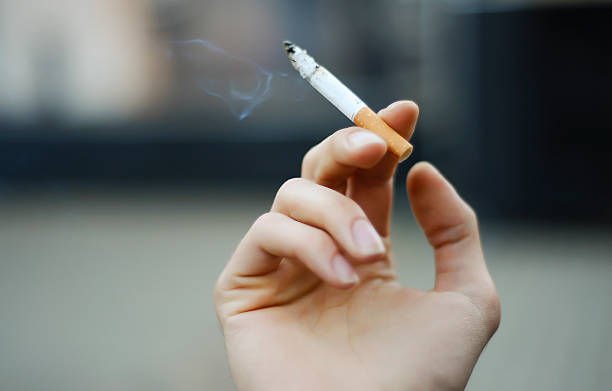Cigarette smoke from clothes can damage brain, liver – Study

Everything is affected by cigarette smoke: carpets, furniture, and clothing. Researchers from the University of California, Riverside, now contend that third-hand smoke (THS) may be dangerous for human health even in this situation.
The mice were subjected to comparable levels of smoke present in the homes of smokers during the study, which was reported in Clinical Science. The mice’s liver and brains displayed cell damage after six months. In addition, they displayed elevated cortisol levels, compromised immunological function, and heightened insulin resistance—all indications linked to the onset of type 2 diabetes.
Manuela Martins-Green, a cell biologist and lead study author, thinks THS exposure is a stealth toxin, a quiet killer. Without realizing it, we can inhale and absorb the poisons through our skin, putting us at risk of injury.
“Although our research was not done on humans, people should be aware that hotel rooms, cars, and homes that were occupied by smokers are very likely to be contaminated with THS,” said Martins-Green, in a statement.

THS toxins can stay on surfaces for years and linger in the hair, skin, and clothing of smokers. Residual tobacco smoke mixes with dust, settles on surfaces and even penetrates porous material in paneling and drywall. And when it combines with indoor pollutants, such as ozone and nitrous acid, new compounds, such as nitrosamine, also known as NNA—a tobacco-specific carcinogen—are created that damage DNA and could potentially cause cancer.
In as little as one month, THS exposure causes harm. Martins-Green and her colleagues took brain, liver, and blood samples at various intervals during the six-month study. At the one-month mark, the mice experienced a 50-percent increase in proteins that trigger inflammation in their blood and liver compared to the control group of mice not exposed to the fabrics. By month two, the mice had increased cell damage in the liver and brain. By month four, they were more susceptible to type 2 diabetes due to a 30-percent rise in fasting blood glucose levels and insulin.
“We found a positive time-dependent significant correlation with increased time of THS exposure and the effects it had on all the variables we measured,” Martins-Green said.
The researchers note that the effects need to be further investigated in humans and exposure needs to be observed over a longer period of six months since humans mature slower than mice. However, the researchers concluded their study can “serve to educate the public on the dangers of THS, and the biomarkers we identified can be used in the clinic, once verified in exposed humans.”
Another study published earlier this year raised concerns about THS in children of smokers. Children who arrived at the emergency room with breathing problems linked to secondhand smoke exposure had more than three times higher the level of nicotine on their hands than the hands of non-smoking adults who live with smokers. The nicotine reading on the hands of children whose parents deemed themselves light smokers suggests these toxins could derive from another source other than direct cigarette smoke.
People who move into houses and apartments owned by previous smokers are also at-risk because THS is difficult to eliminate. The toxins that make up cigarette residue have a different reaction to cleaning products, which can make it hard to eradicate pollutants. Bo Hang, a scientist at the Lawrence Berkeley National Laboratory in California, previously told National Geographic, “The best approach is to replace the carpets, clean up the ventilation system. All this could help. But we are waiting for some kind of new-generation cleaner.”
Public health agencies are attempting to implement tobacco bans to address secondhand smoke exposure and potentially THS. The Centers for Disease Control and Prevention states that almost half of U.S. residents are now covered by comprehensive state or local smoke-free laws that do not permit smoking in workplaces, restaurants, and bars.




